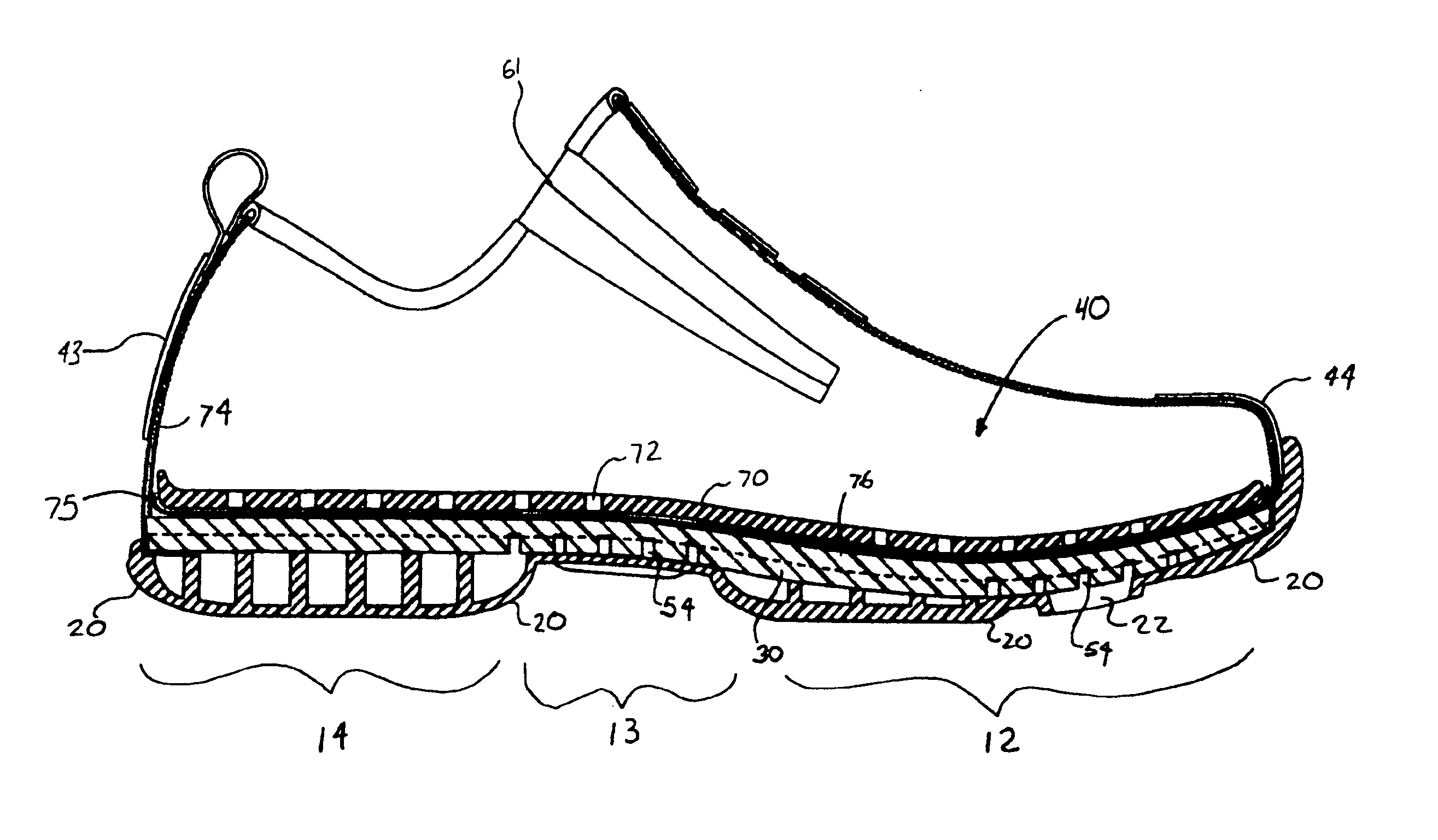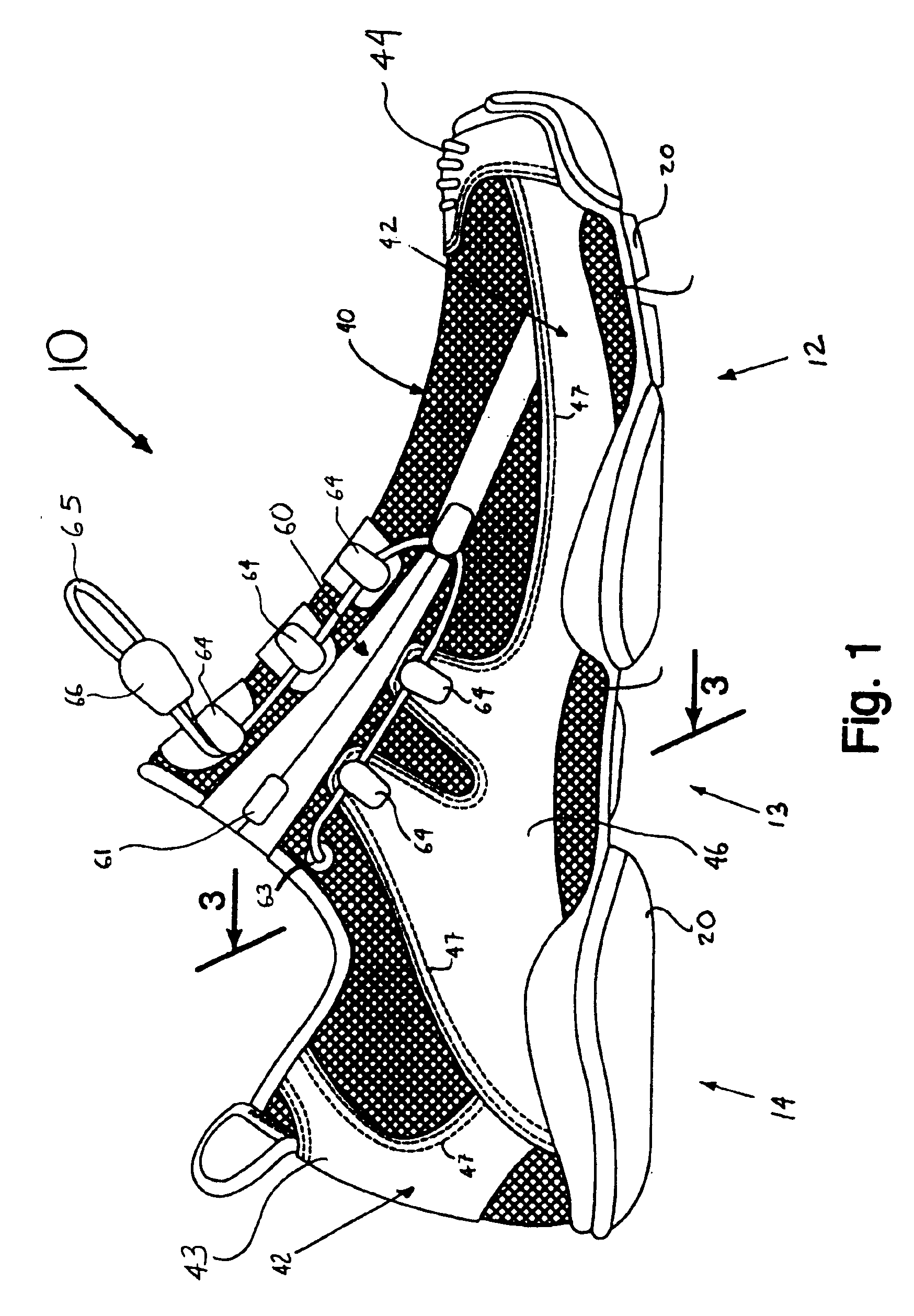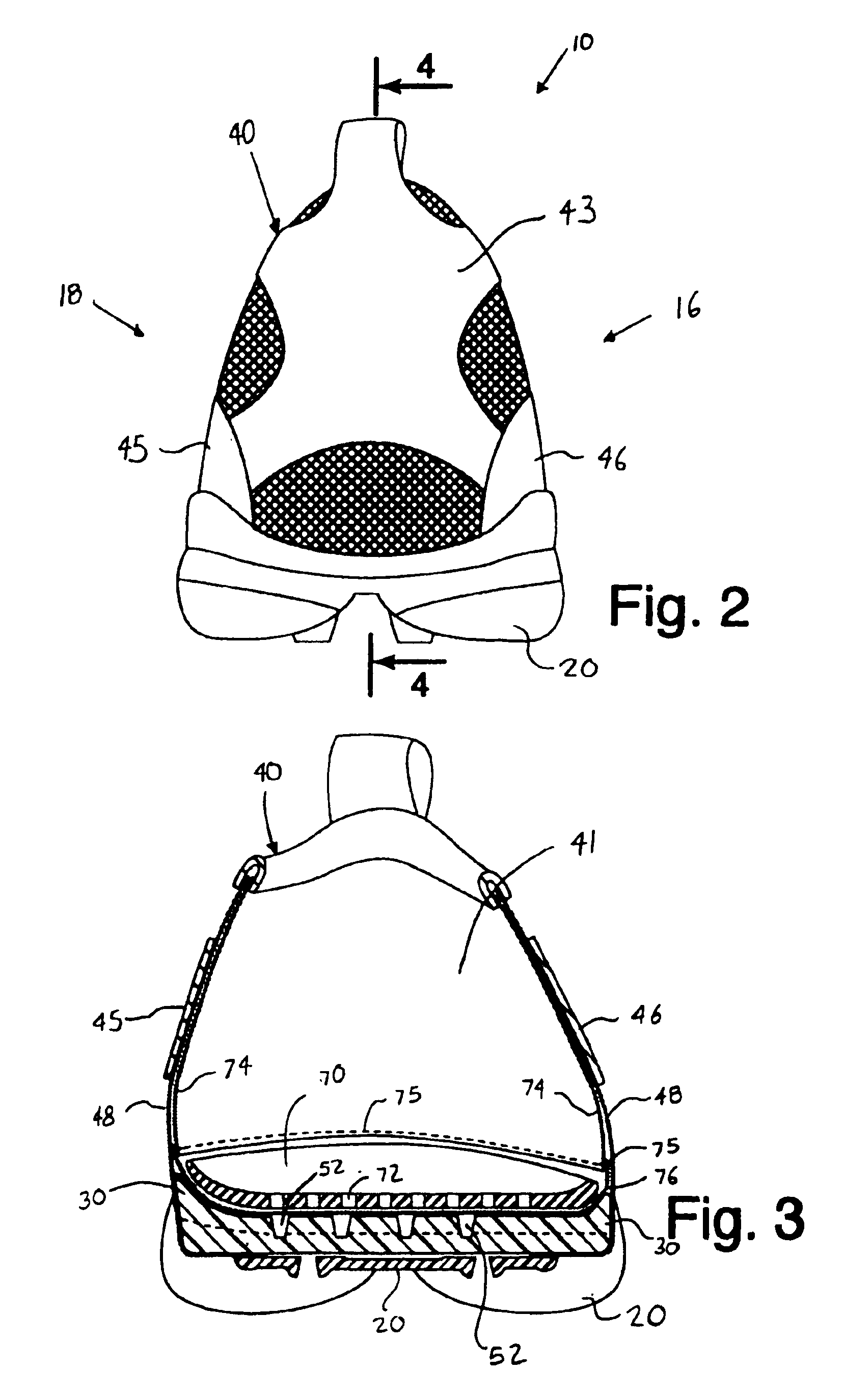Self draining shoe
a shoe and self-draining technology, applied in the field of footwear construction, can solve the problems of blisters, blisters, and bacteria growth, reduce wearability, and reduce wearability, and achieve the effect of maintaining the stability required in outdoor footwear, smooth, uniform and stable surfaces, and eliminating pressure points
- Summary
- Abstract
- Description
- Claims
- Application Information
AI Technical Summary
Benefits of technology
Problems solved by technology
Method used
Image
Examples
Embodiment Construction
A shoe constructed in accordance with the preferred embodiment of the present invention is shown in FIGS. 1 and 2 and generally designated 10. The shoe 10 is constructed to permit water to freely drain from the shoe through the upper and the sole. In general, the shoe 10 includes an outsole 20, a midsole 30, a mesh-like upper 40 and a perforated footbed 70. The midsole 30 includes water drainage channels 50 arranged in a waffle-like configuration. The outsole 20 defines water outlets and is shaped to allow water to drain from the midsole 30. The illustrated shoe 10 is intended to be worn on the left foot and will be described in detail. Of course, a shoe intended to be worn on the right foot is preferably the mirror image of the illustrated shoe 10. The shoe 10 includes a front portion 12, a middle portion 13, a rear portion 14, an inner or medial side 16, and an outer or lateral side 18. By way of further clarification, when worn, the medial side 16 of the illustrated shoe 10 for t...
PUM
 Login to View More
Login to View More Abstract
Description
Claims
Application Information
 Login to View More
Login to View More - R&D
- Intellectual Property
- Life Sciences
- Materials
- Tech Scout
- Unparalleled Data Quality
- Higher Quality Content
- 60% Fewer Hallucinations
Browse by: Latest US Patents, China's latest patents, Technical Efficacy Thesaurus, Application Domain, Technology Topic, Popular Technical Reports.
© 2025 PatSnap. All rights reserved.Legal|Privacy policy|Modern Slavery Act Transparency Statement|Sitemap|About US| Contact US: help@patsnap.com



